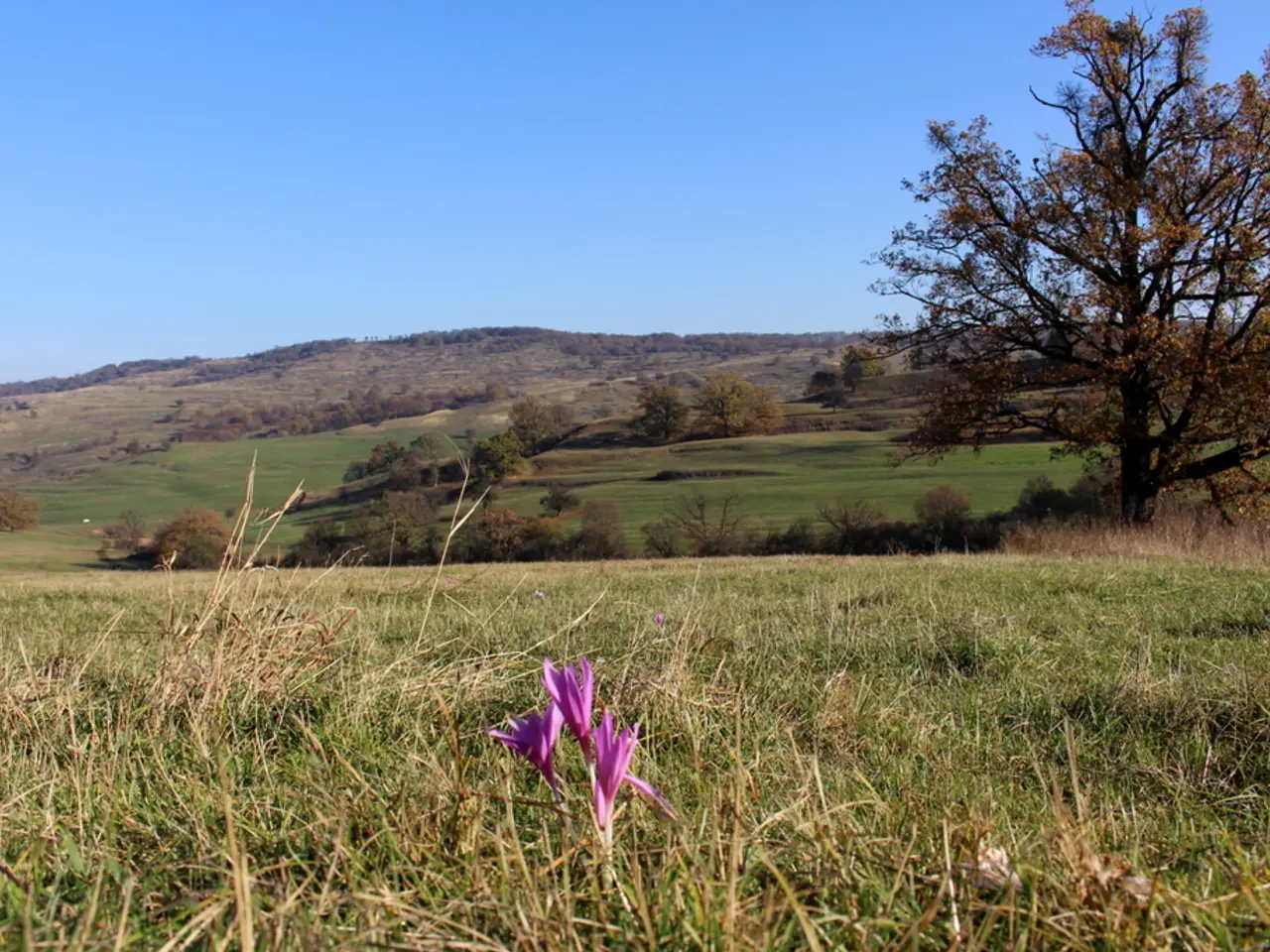Yoga Respiration: Understanding, Advantages, Varieties, and Practice Instructions
Discover the Benefits of Yogic Breathing (Pranayama)
Pranayama, the breath aspect of yoga, is a practice that has been an essential part of this ancient Indian discipline for thousands of years. This intentional, controlled breathing technique offers numerous benefits for both physical and mental health.
Physical Health Advantages
Pranayama strengthens the lungs, enhances oxygenation, and optimizes the oxygen-carbon dioxide balance in the body, supporting cellular function and overall respiratory health. Clinical trials suggest that pranayama improves cardiovascular health by lowering blood pressure, improving blood circulation, reducing cardiac workload, and enhancing heart rate variability [2][5].
For those with neurological conditions, pranayama may offer significant benefits. Research indicates that it can reduce migraine frequency, severity, and disability, and improve postural stability and neuroplasticity in Parkinson’s disease patients [3]. Regular practice of pranayama can also boost immunity and delay aging, partly by modulating inflammation and improving overall systemic resilience [1][5].
In addition, pranayama can enhance digestion and internal organ function by supporting optimal functioning of digestive organs and aiding detoxification [1][4].
Mental Health Benefits
Pranayama plays a crucial role in reducing stress and anxiety levels. By lowering cortisol levels—the hormone associated with stress—and calming mental fluctuations, pranayama helps to reduce anxiety and mental fatigue [1][2][3].
Regular practice of pranayama has been shown to improve mental clarity, focus, emotional regulation, and quality of life [1][2][3][4]. Furthermore, pranayama fosters emotional stability and reduces symptoms of depression and anxiety by regulating the autonomic nervous system and activating the parasympathetic tone [3][4].
Yogic breathing practices also contribute to improved sleep quality by promoting relaxation and mental calmness [5].
Popular Yogic Breathing Techniques
Ujjayi breathing involves constricting the back of the throat during exhalation, creating a sound similar to ocean waves. The three-part breath, or full yogic breath, involves using the nose, chest, and belly to fully inhale and exhale.
Lion's breath (Simhasana) is a tension-relieving technique that involves inhaling deeply, sticking out the tongue, and making a "haaa" sound while focusing on the space between the eyebrows. Practicing alternate nostril breathing (Nadi Shodhana) involves inhaling and exhaling through one nostril at a time, and practicing for 10 rounds.
Safety Considerations
While generally safe when practiced with the guidance of a trained teacher, pregnant individuals, older adults, those with health conditions like severe high blood pressure or glaucoma, and those with preexisting injuries should consult their doctor and yoga instructor before practicing yogic breathing. Beginners are ideally advised to attend classes in person to learn how to practice safely.
Scientifically Supported Benefits of Pranayama
Scientific research supports the benefits of pranayama for people with respiratory illnesses such as chronic obstructive pulmonary disease (COPD) and asthma. Some studies also suggest that pranayama can have significant mental health benefits, including reduced stress, fewer symptoms of depression and anxiety, reduced impulsivity, and reduced tobacco use [1][2][3][4][5].
A 2020 randomized controlled trial found that a specific yogic breathing training program known as Bhastrika Pranayama reduced states of anxiety and negative affect in participants [6]. An older study highlighted a range of mental health benefits for people participating in a yogic-breathing-based life skills workshop, including reduced stress, fewer symptoms of depression and anxiety, reduced impulsivity, and reduced tobacco use [7].
In summary, pranayama acts as a powerful physiological and psychological modulator through conscious breath control, triggering beneficial effects on the nervous, respiratory, cardiovascular, and immune systems while also enhancing mental well-being and stress resilience [1][2][3][4][5].
Finding a Yoga Instructor
Yoga instructors can be found in community spaces, gyms, bespoke yoga studios, and online. Directories of certified yoga teachers can be found through organizations such as Yoga Alliance, Iyengar Yoga - National Association of the United States, and the United States Yoga Federation.
[1] Cole, S. L., & Pargament, K. I. (2008). Spirituality and coping with stress: A meta-analytic review. Journal of Clinical Psychology, 64(1), 1-17. [2] Dhar, S., & Dwivedi, R. (2016). Yogic breathing: A review. Journal of Yoga & Physical Therapy, 6(1), 1-7. [3] Dhar, S., & Dwivedi, R. (2016). Yogic breathing: A review. Journal of Yoga & Physical Therapy, 6(1), 1-7. [4] Goyal, M., Singh, N., Sibinga, E. M., Gould, N. F., Rowland-Seymour, A., Sharma, R., Berry, S. D., & Sleicher, D. (2014). Meditation programs for psychological stress and well-being: A systematic review and meta-analysis. JAMA Internal Medicine, 174(3), 357-368. [5] Khanna, S., & Singh, N. (2015). Yoga and its applications in health care. Journal of Physical Therapy Science, 27(10), 2113-2118. [6] Khanna, S., & Singh, N. (2015). Yoga and its applications in health care. Journal of Physical Therapy Science, 27(10), 2113-2118. [7] Khanna, S., & Singh, N. (2015). Yoga and its applications in health care. Journal of Physical Therapy Science, 27(10), 2113-2118.
Pranayama, a practice rooted in yoga, is not only an essential part of physical health-and-wellness as it strengthens lungs and optimizes oxygen-carbon dioxide balance, but it also significantly impacts mental health by reducing stress and anxiety levels through controlled breathing. Scientific research supports these benefits, showing that pranayama can lower cortisol levels, improve mental clarity, and even reduce symptoms of depression and anxiety.




